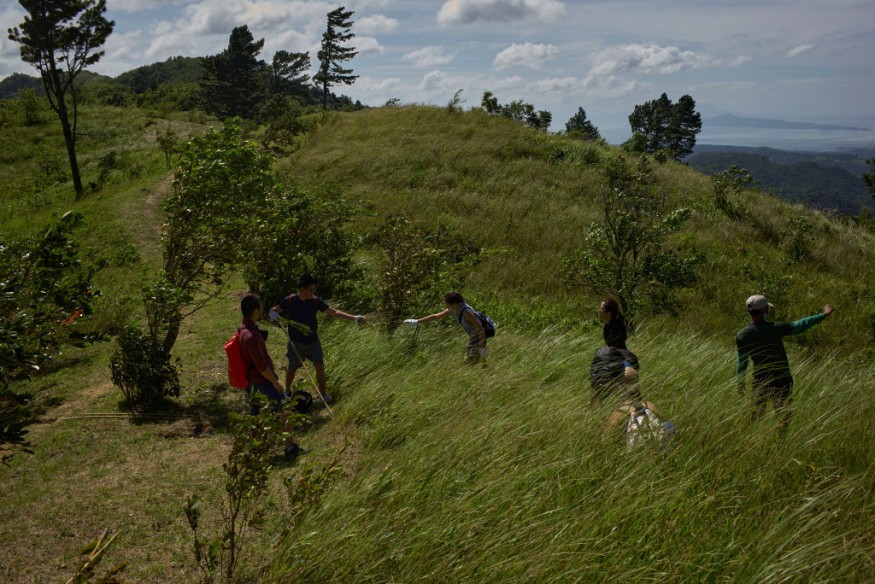Mexico Is Paying Hundreds of Thousands of Farmers to Reforest Rural Areas

Mexico's anti-poverty program, Sembrando Vida, continued to re-green deforested areas by paying more than 400,000 farmers in 20 states to foster trees and native plants such as agave.
Spanish for "planting life," the Sembrando Vida, which began in 2018 and will run until 2025, is considered one of the most ambitious rural anti-poverty initiatives in Mexico's history.
Small producers targeted by the program are supported by a monthly stipend of 5,000 Mexican pesos (US$247), Global Press Journal reported.
Sembrando Vida Program in Mexico Is Changing Lives
For as long as Abel Sanchez Tapia can remember, his family has depended on "tepetate," a volcanic soil typical in central Mexico.
They would apply a thin layer of compost on the stubborn rock every year before planting a subsistence crop of corn and beans. Once the land is cleared, Sanchez, 74, will embark on a new kind of farming that brings a sense of hope.
"It has never been possible to grow anything else on this poor land," he noted. But now, he said they "are going to grow agaves."
The prickly succulent has long been valued for its medical capabilities and as a source of nutrition, but it is also a key element in alcoholic drinks: tequila and mezcal.
A thriving agave farm, Sanchez said it could benefit his four adult children. He and his family were struggling to meet their basic needs before joining the Sembrando Vida program.
Sanchez's stipend covers the majority of his monthly income, including food and other necessities, as well as the cost of seeds and fuel.
"This is the first time the government has really looked at the rural people," he noted. With the advice and support from Sembrando Vida technicians, Sanchez is adopting the traditional crop-growing method of milpa, alternating his agave planting with guaje beans, peach trees, and two types of edible cacti: nopales and pitahaya.
Sembrando Vida's Agave Farming Faces Backlash
According to some critics, agave farming is only a small portion of the Sembrando Vida initiative, which has come under fire for lack of oversight.
Last year, the World Resources Institute, a global non-profit with a major presence in Mexico, released a report claiming that the program could have a "negative impact on forest cover" and the fulfillment of the carbon mitigation objectives.
However, the institute also suggests that Sembrando Vida could meet its aims by reducing early negative program impacts and strengthening compliance with its environmental objectives.
The institute's forests director, Javier Warman, said they are now comparing conditions in places that did not receive Sembrando Vida funding.
Mexican officials declined to comment. But in December, former Secretary of Welfare Javier May Rodriguez said the government was close to achieving its goal of planting more than one million hectares.
READ NEXT: Disney, Warner Bros., Sony Halt All Upcoming Film Releases in Russia Over Ukraine Invasion
The Growing Business of Agave Plant In Mexico
Sanchez believes the wait for the agaves will be worth it as eventually, he can sell his harvest to mezcal distilleries, a burgeoning business.
Mezcal draws from a broad range of the more than 159 species of agave in Mexico, but tequila is made solely with blue agave.
In 2027, when Sánchez anticipates his first agave crop to be ready, the worldwide mezcal market, which was worth $727 million in 2019, is predicted to expand to more than $1 billion.
Sanchez does not know whether he will live long enough to see that day. But what matters most to him, he added, was the future he was creating for his family.
Sanchez noted that he imagined his children encouraging their own children to continue the tradition. He said: "Do it because this is a gift from your grandfather."
READ MORE : Ukraine Vice PM Asks Elon Musk for Starlink Help Amid Russia Crisis, SpaceX Boss Gives Perfect Response!
This article is owned by Latin Post.
Written by: Jess Smith
WATCH: Mexico - Reforestation and Water Protection | Global 3000 - From DW News
Subscribe to Latin Post!
Sign up for our free newsletter for the Latest coverage!
© 2025 Latin Post. All rights reserved. Do not reproduce without permission.














